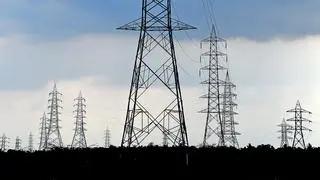For those willing to take on some risk, infrastructure stocks are a good bet. The sector is gradually emerging from a troubled period, helped by a range of measures to address land acquisition, lower project costs, and improve funding.
The stock of road developer IRB Infrastructure Developers trades at 17 times its trailing 12-month consolidated earnings and 12.8 times its estimated earnings for 2016-17. While this is above the three-year average of around eight times, the stock tends to be quite volatile. Fellow road players Sadbhav Engineering and Ashoka Buildcon trade at much higher valuations.
The IRB stock is a good bet for investors with a two-three year perspective, for three reasons.
Comfortably placedOne, IRB Infra has a strong order pipeline with six projects in its kitty. The order book of approximately ₹11,000 crore and a two-year execution timeline offer good earnings visibility. Construction revenues had slowed, dropping 14 per cent in the April-December 2014 period over the year ago, as IRB saw the Jaipur-Deoli and the Pathankot-Amritsar projects move into the operational stage and with work not having begun on the newest — and second-largest — project.
Construction has now begun on this project. In addition, IRB has snapped up three new large projects (more than ₹2,000 crore) over the past year, one of which has just achieved financial closure.
Funding will be tied up for the other two in the next few months; construction revenue is thus set to clock healthy growth. Further, barring one, the new projects won by IRB are on grant (from the NHAI) basis and don’t involve premium payment to the NHAI, reducing the project cost.
While awarding of state highway projects is still slack, the situation is improving for national highways, IRB’s mainstay. The company is a direct beneficiary of higher awarding activity.
Robust tollsTwo, IRB’s toll revenue could improve with traffic volume picking up. In its toll road portfolio comprising sixteen projects, key ones such as the Surat-Dahisar, Bharuch-Surat, and Mumbai-Pune have pulled out of their slump and posted healthy growth in the past three quarters. Toll revenue has grown 24 per cent in the nine months to December 2014 over the year ago.
Part of this high figure is due to a lower base; this effect could diminish gradually. Revenue growth in tolls could also moderate with toll rates linked to the WPI. But this can be compensated by sustained growth in traffic volumes, and traffic is directly correlated with economic growth. One more project will move from execution into operational phase in mid 2015-16.
Better toll collected in the past three quarters compensated for the lower execution activity. Consolidated revenue grew 0.3 per cent in the April-December 2014 period over the year ago. Lower execution also reduced construction costs, with consolidated operating profit margins improving to 57 per cent in the nine months to December 2014 from 46 per cent the year ago. With execution increasing now, operating profit margin may move back to the 43-45 per cent it used to be.
Healthy balance sheetThree, IRB Infra is among the better placed infrastructure companies when it comes to financing projects. The company recently raised Rs 440 crore through a qualified institutional placement. Its debt-equity ratio of 2.9 times is high and interest cover is just about 2.5 times. The high debt levels will persist, given the scale of IRB’s projects.
But the financing position is still healthier than almost all peers and IRB hasn’t had trouble securing financial closure for its projects. Its debt hasn’t spiralled quickly, but has gradually expanded as the company deployed it into increasingly bigger projects. The interest burden can reduce slightly if banks cut lending rates, and if measures easing lending rules for infrastructure projects take effect.
Net profit margin could therefore improve from the 12-13 per cent it is at now. Consolidated net profit grew 15.7 per cent in April-December 2014 over the year ago.








Comments
Comments have to be in English, and in full sentences. They cannot be abusive or personal. Please abide by our community guidelines for posting your comments.
We have migrated to a new commenting platform. If you are already a registered user of TheHindu Businessline and logged in, you may continue to engage with our articles. If you do not have an account please register and login to post comments. Users can access their older comments by logging into their accounts on Vuukle.